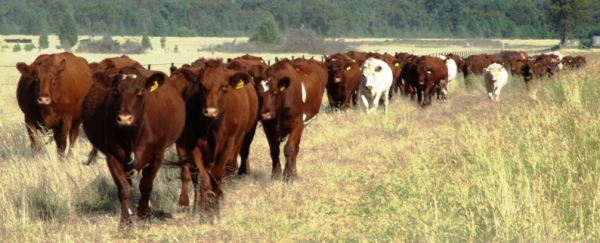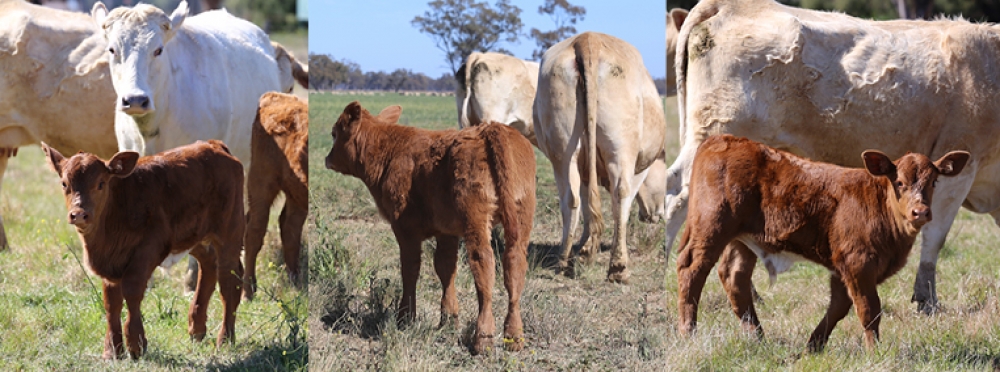Over the last couple of years Jason and Kylie Catts have been working with commercial producers like Will and Tim Bowman to collect meaningful field data to get a better understanding of what genetics are performing best in a commercial operation, to the feedlot and through to slaughter.
“The process has been rewarding on a number of levels, not just seeing how the cattle are performing. Working with commercial producers has allowed us to contribute to improving the profitability of their business and in turn gives us data that can improve our product more rapidly. It’s a real win win.
The process has evolved gradually with producers starting to AI their heifers and seeing benefit in using better genetics and shortening their calving period. By using the right bulls on heifers, we are finding the highest performing cattle are out of heifers. If we can display the benefits, it does not take much more encouragement to keep people interested in using better genetics.
It’s a bit addictive, once people start improving their cattle and getting good feedback, they just want more so the process grows. We even have producers wanting to DNA and collect phenotypes of their heifers so they can get genetic evaluation on their females. This enables them to make more informed decisions on culling and joining options. It’s rewarding for producers and good for the accuracy of Shorthorn genetic evaluation.
The model is simple, producers collect birth dates and calving ease scores on their females, a weaning weight on the calves then we take a DNA sample of the calves for parent verification and genomic chip training. The steers go to the feedlot then abattoir for collection of growth and carcase data. The information is then fed back into IGS contribution to genetic evaluation. It’s all the information we need to make rapid genetic gain and from non-biased large contemporary groups.
The changes that Shorthorn Beef has made to its service providers for genetic evaluation (IGS) and pedigree and data processing (C Gen) has made it possible to large scale progeny test programs at a fraction of the cost than was previously possible. It’s an exciting time for Shorthorn beef members who want to accelerate genetic gain.
Overall, from a seedstock producers prospective “it’s great to break down the barriers in the supply chain and have all sectors supporting and working together to make the product more profitable for everyone”
Profile of a Thousand Guineas Supplier
Shorthorn breeders and brothers, Will and Tim Bowman, operate a cattle breeding, sheep and lamb and cropping enterprise on 2630-hectare property “Gundy” at Tooraweenah, NSW. They join currently around 300 Shorthorn cows and 1500 Merino ewes each year and crop about 600ha annually.
The Bowman family has been breeding Shorthorn cattle at “Gundy” since the 1830’s and were one of the first breeders to support the JBS Australia Thousand Guineas brand. Around 100 head of “Gundy” steers are supplied to the JBS Australia feedlot at Caroona, usually weighing around 450 kilograms at 15 months of age.
Each year around 80 heifers are also retained and joined, with the remaining heifers sold to the JBS Scone plant for their grass-fed brands. The Bowman’s breeding strategy is focused on medium-framed, easy-doing cows with low birthweight. “We don’t want anything too big. We are tough on fertility and cull cows that don’t get in calf or raise a calf.”
The Bowman’s are also extremely conscious of ensuring that their annual turnoff also strictly meets the criteria for the JBS Australia Thousand Guineas brand, with an emphasis on marbling in their program. To support the Thousand Guineas brand, the Bowman’s work closely with their seedstock supplier, Jason Catts of Futurity Shorthorns, to ensure that they are driving genetic improvement in their herd. Around 250 cows are artificially inseminated to leading Shorthorn sires with 70% calving to the AI and the rest to quality back up bulls.
Far from being content to rest there though, they also work with Jason Catts and the Shorthorn Society to measure the performance of the progeny, both on farm and through carcase feedback. “Dad had done a good job of buying better bulls, we are working on trying to improve on that.” Tim Bowman said.
The Bowman family is part of a Shorthorn satellite program, which sees leading commercial and seedstock producers working with the Shorthorn Society to develop protocols to ensure that performance data collected is suitable for inclusion in the breeds genetic evaluation program. This year 102 Bowman family steers were measured through the Thousand Guineas program.
Joining, calving and performance traits are measured on farm with a DNA sample taken as the cattle are sent to the feedlot. Carcase data is supplied to the Bowman’s by JBS Australia and the steers are genotyped, which guarantees the pedigree of each animal. The genomic testing is then used to provide highly accurate performance predictions for each sire used, allowing the Shorthorn breed to identify leading genetics for the future.
“Collecting data helps improve the herd by following what each sire is doing, but also getting down a bit deeper, to follow what the cows are doing.”
Heifers are also recorded and the flow on of carcase data from steers allows them to make better heifer selection decisions, which creates a looped feedback system. In this way, their supply to the JBS Australia Thousand Guineas brand is allowing them to sell into a premium Shorthorn market, whilst also allowing them to select for better generations of Shorthorns for the future.
“The main selection is that if the cow gets in calf, she stays. So, we are trying to follow progeny through to look a bit deeper and make sure her progeny really perform.”
Source: Shorthorn Beef Summer magazine 2020


 Jason:
Jason:  Kylie:
Kylie: